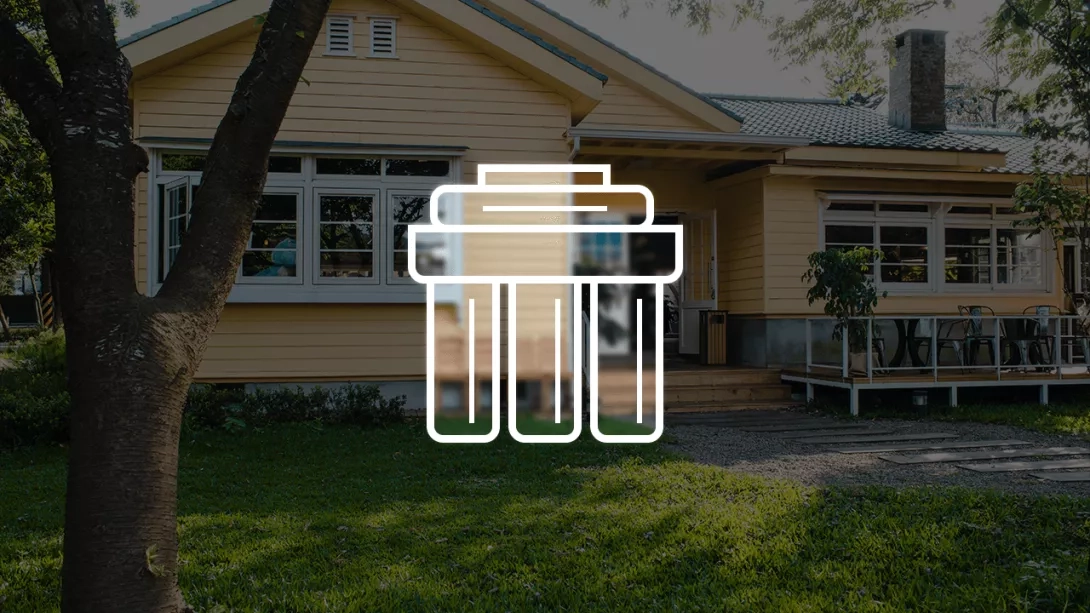Introduction
There are various types of home water filters, but the maintenance of almost all of them boils down to replacing the replaceable components. We've previously discussed how water filters work.
Pitcher
Perhaps, maintaining a pitcher filter is the simplest, and this simplicity appeals to many people.
When it's time to service the filter, the first thing to do is purchase a new cartridge. It might seem simple, but as soon as you enter the store, your eyes widen at the variety of cartridges from different manufacturers. Here's what to do to avoid confusion:
- Remember or write down the model of your filter.
- Take the used cartridge with you or photograph it.
If your filter and its components are discontinued, there are universal cartridges available. To avoid frequent purchases, most people opt for a large set, which includes 3-6 cartridges, expected to last a year of filter usage.
If you already have a new replacement, the next step is to actually replace the water filter cartridges. Here's how to do it:
- Remove the used cartridge.
- Thoroughly rinse the filter parts.
- Place the new cartridge in a container with water (you can use the pitcher body) and shake well to remove excess air.
- Insert or screw the new cartridge into the funnel until it stops.
- Pour out two portions of purified water.
After that, you can enjoy using the water.
An important aspect concerning any filter is the frequency of maintenance. We recommend replacing the pitcher filter cartridge no less than once every 2 months.
Flow-through filter
Such a filter consists of a cascade of three flasks with different cartridges. They typically include:
- A polypropylene cartridge with a filtration rating of 5 microns to remove mechanical impurities from the water: sand, rust, silt, scale, and clay.
- A cartridge with the unique material Ecomix to reduce the content of iron, manganese, hardness salts, and heavy metals.
- A carbon block to remove organic impurities and chlorine from the water, which cause color and odor.
There are variations of cartridges in 3-stage water filters depending on the goals and composition of your water. For example, in the improved set of Ecosoft cartridges, instead of mechanical filtration at the first stage, it is proposed to install a flask with ion exchange resin for more intensive water hardness reduction. It is recommended to replace cartridges approximately every 6 months or in case of sudden deterioration of water quality.
Installation order of Ecosoft cartridges
If it's time to replace, you've selected and purchased the cartridges; we'll tell you how to replace the water filter cartridge. The step-by-step scheme of how to unscrew the water filter and how to change the water filter:
- Turn off the cold water tap and release the pressure in the system by opening the purified water tap. Remove the filter from the mounts.
- Remove the clip from the red tube, press the tong inside, and pull out the tube. Repeat the operations for the blue tube.
- Place the filter in the sink or bowl and unscrew the flasks with a service wrench. Sequentially remove the replaceable cartridges and rinse the flasks under running water.
- Open the package with new cartridges, remove them from the polyethylene film, and install them sequentially as indicated in the instructions.
- Check if the sealing rings are evenly installed. Screw the flask into the housing by hand without using a service wrench.
- Connect the red tube on the left and put on the clip. Repeat step 12 with the blue tube. To check the connections, pull on the tubes.
- Open the purified water tap and the water supply tap to the filter and set it to a rate of 1 liter/min.
- Drain the water for 30 minutes.
If you follow all the manipulations according to the instructions, the installation will take no more than 5 minutes.
We have prepared a video to visually demonstrate this process.
Tips for servicing and operation of the triple filter
- To avoid forgetting to purchase and replace the cartridge in the filter, set a reminder on your phone when installing a new set.
- If you plan not to use the filter for an extended period, shut off the water supply to it.
- If an unpleasant odor or taste develops in the water or after prolonged inactivity, disinfect the cartridge housing and install new cartridges.
Reverse Osmosis Filter
Such devices are mini-plants for producing drinking water directly in your kitchen.
Structurally, the system consists of:
- 3 pre-filtration cartridges;
- membrane element;
- post-filter;
- water storage tank;
- mineralizer (optional);
- pumps (optional).
The purpose of installing a block of pre-filter cartridges is to remove impurities from the water that can damage or clog the membrane element.
The cartridge made of foamed polypropylene traps mechanical impurities smaller than 5 microns (sand, rust, which can damage the membrane sheet or clog its pores). The carbon filter absorbs chlorine, which can degrade polyamide — the material of the membrane sheet, and organics that contribute to the formation of deposits on the membrane surface. This prevents the full passage of water, namely reducing its productivity. The final purification of water is carried out on the carbon block with activated carbon or on a mechanical filter with a filtration rating of 1 micron.
Next is the stage of membrane separation, which is the heart of the installation. Thanks to tiny pores up to 0.0001 microns in size, it is capable of removing viruses and even ionic contaminants: hardness salts, nitrates, heavy metals.
After the membrane, water passes through a post-filter, inside which there is a mixture of activated carbon and natural components that significantly improve the taste of water.
Then the water enters the storage tank to provide you with round-the-clock access to drinking water.
The last stage of the process can be mineralization to provide water with a richer taste and beneficial microelements — calcium and/or magnesium (depending on the filter model and mineralizer).
System maintenance
Servicing all parts of the reverse osmosis system is based on replacing the filtering elements:
- prefilter cartridge set — once every three months;
- reverse osmosis membrane — once a year;
- post-filter — every six months;
- mineralizer — every six months.
The frequency of replacing certain filter components depends on their resource, filtration characteristics, water quality, and system usage frequency.
Below, we will describe in detail the maintenance of each element of the system.
Prefilters
To replace the cartridges, you need to perform a series of operations similar to servicing a triple filter, as we discussed earlier. Cartridges are available in convenient sets of 3 units.
The recommended frequency of replacement is based on extensive experience in servicing such filters. With an average level of contamination of tap water and consumption volume, cartridges usually exhaust their resource in three months and begin to pass organics and mechanical impurities. If there is a prolonged delay, this leads to rapid wear and failure of the expensive membrane element.
Membrane
The membrane element is the most expensive component of the system, and its replacement is carried out once a year. This is the average optimal term after which the membrane element maintains high productivity in purifying water.The water filter replacement process involves the following steps:
- Turn off the water supply to the filter.
- Tighten the tap on the storage tank.
- Open the tap for purified water to release pressure from the system.
- Disconnect the white tube.
- Unscrew the membrane housing using the service wrench from the kit.
- Use pliers to remove the used membrane element.
- Install the new membrane element. The part with two rings should enter the housing first. Try not to touch the membrane element to avoid the proliferation of microorganisms.
- Tighten the lid back using the service wrench and reconnect the tube.
- Open the water supply tap to the filter outlet and the purified water tap on the sink for 30 minutes. Open the tap on the tank and close the tap for purified water.
- Drain the first 2 tanks of purified water. Check the filter for leaks.
What if you forget to replace the membrane?
The decrease in membrane productivity is due to the accumulation of deposits on its surface. Signs that the resource is coming to an end include:
low pressure in the purified water tap;constantly half-empty storage tank;an increase in the amount of wastewater.Ultimately, water will simply stop flowing from the tap. It is also important to know that even after the expiration of the membrane's term, it will not pass contaminants.
Post-filer
For the effective operation of this component of the system, we recommend replacing the post-filter once every 6 months.
- Turn off the water supply to the filter.
- Drain the water from the system using the purified water tap.
- Remove the clips and tubes from the used post-filter.
- Remove the old post-filter from the mounts.
- Install and connect the new element.
- Restore the water supply.
Mineralizer
To get tasty and healthy drinking water, it is recommended to change the mineralizer every six months and follow the order of installing water filters. Usually, after the expiration of this term, it practically ceases to release beneficial microelements into the water.
The process of replacing the mineralizer is carried out by analogy with the post-filter.
Filter Service Life
The service life of filters depends on several factors, including the type of filter, its design, the quality of materials used, usage intensity, and water quality. Here are some general guidelines regarding the service life of various types of filters:
- Mechanical filters (e.g., mechanical cartridges) typically require replacement every 3-6 months. This may vary depending on the level of water contamination.
- Carbon filters are recommended to be replaced every 6 months. Carbon filters are effective in removing odors and tastes, and their absorption capacity decreases over time.
- Reverse osmosis membranes are usually replaced annually, but this may vary depending on the degree of water contamination and system usage intensity.
- Ultrafiltration (UF) and membrane filters may have a service life ranging from 1 to 3 years, depending on the model and manufacturer.
It is important to regularly check the condition of filters and follow the manufacturer's recommendations. If the water begins to lose quality or there are signs of contamination, replacing the reverse osmosis filters can help. Regular maintenance helps ensure the effective operation of the water purification system.
References:
- Installation and operation manual for Ecosoft reverse osmosis system. URL: https://drive.google.com/file/d/1XpNuZ3BruUMv0R7BJT_ElICNYBzgXiU8/view
- Passport and operating instructions for Ecosoft triple water purification filter. URL: https://ecosoft.ua/upload/iblock/0d9/manual_trio_filter.pdf.pdf
- Passport and operating instructions for Ecosoft pitcher filter. URL: https://ecosoft.ua/upload/iblock/456/paspfmvlunaexp.pdf








